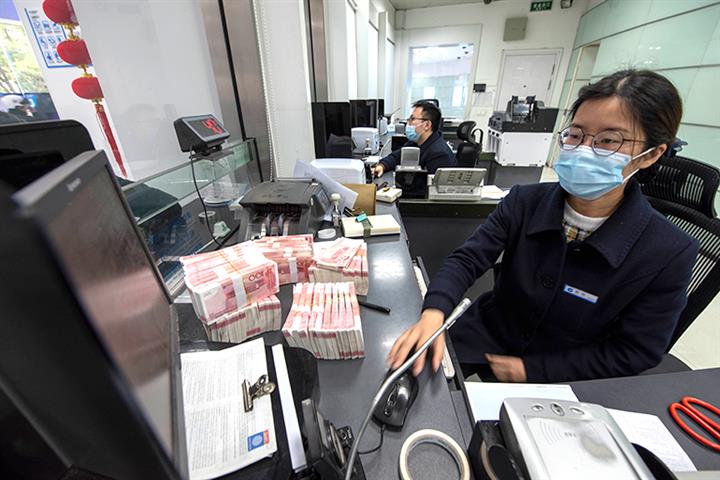 China’s New RRR Cut Is in Line With a Return to Normal Monetary Policy, PBOC Official Says
China’s New RRR Cut Is in Line With a Return to Normal Monetary Policy, PBOC Official Says(Yicai Global) July 13 -- There has been no change to China’s prudent monetary policy and the upcoming reserve requirement ratio cut this week is a regular procedure as the country’s monetary policy returns to normal, a senior official at the People’s Bank of China said at a press conference today.
On July 9, the central bank said it will lower the RRR for financial institutions by 0.5 percentage point on July 15, releasing around CNY1 trillion (USD154.3 billion) in long-term funds to support the development of the domestic real economy.
“The RRR cut is a routine liquidity operation after monetary policy returned to normal in the first half, and the exercise of prudent monetary policy has not changed,” said Sun Guofeng, director of the PBOC’s Monetary Policy Department.
Now that the pandemic is over, China will adhere to normal monetary policy and the autonomy of monetary policy, he added.
Excerpts from the press conference are given below:
Yicai Global: How likely is a further RRR cut?
Sun Guofeng: The PBOC will keep the total amount of money supply and the social financing scale basically in line with the nominal economic growth rate. It will consolidate the results of the decline in the real interest rate of loans and promote the reduction of comprehensive social financing costs.
YG: China’s producer price index, an indicator of corporate profitability, has risen rapidly recently. The market is concerned that there may be further RRR cuts or even interest rate cuts on the basis of this overall RRR cut?
Sun: The rapid PPI increase is due to the low baseline of negative growth last year caused by the pandemic, as well as the imported impact of rising international commodity prices. The PPI indicator is always volatile and it is not uncommon to see it dip or rise within a few months.
Overall, the rise of China’s PPI is phased. It may remain relatively high in the second and third quarters of this year. As the base effect gradually fades and global supply recovers, the PPI is expected to fall in the fourth quarter of this year and next year.
YG: What are the risks associated with diverging China-US monetary policies? The US’ Federal Reserve earlier released policy tightening signals, which caused the global market to plummet. In this context, the PBOC announced a comprehensive RRR cut. The market is concerned that the divergence of China-US monetary policies may bring risks including the depreciation of the Chinese yuan or capital outflow.
Sun: We have also noticed that there have been discussions in the market regarding the tightening of the Fed’s monetary policy. China’s 10-year Treasury bond interest rate is currently around 3 percent, which is even lower than before. The yuan’s exchange rate is fluctuating both ways. China’s financial market has maintained stable operations, and its economy has kept up a steady performance with good momentum for growth. The Fed’s monetary policy shift has relatively small impact on China’s monetary policy and financial markets.
Editor: Kim Taylor